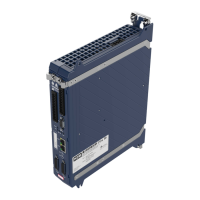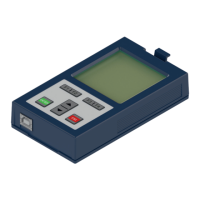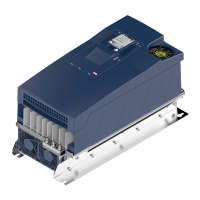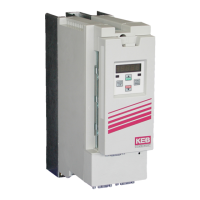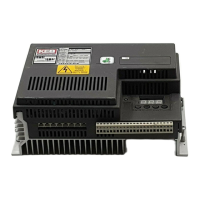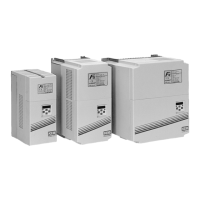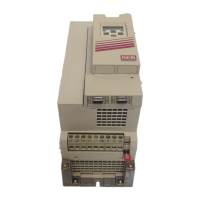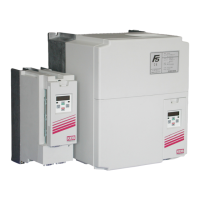There are 2 different procedures to detect the motor phase failure. Depending on
the application, both have their advantages and disadvantages.
➢ DC signal(Default procedure)
➢ Advantages
▪ No equivalent circuit data necessary. It is sufficient to estimate the
data via dr99 = 2
▪ Conditionally suitable for sine-wave filter operation (depending on
the resonance frequency of the system)
➢ Disadvantages
▪ Signal generates a torque. This allows the motor to be rotated with-
out a brake
▪ slight noise emission
▪ Identification time depending on the time constant of the motor, ap-
prox. 30...250ms
➢ High-frequency signal
➢ Advantages
▪ no torque, therefore the drive is not twisted even without a brake.
▪ can be used for all motor types
▪ short identification time, depending on the maximum switching fre-
quency of the drive.
▪ very silent
➢ Disadvantages
▪ Inductance of the motor must be known
▪ not suitable for operation with sine-wave filter
Presetting and evaluation of a DC signal
Current level: Asynchronous motor: 0.5 * dr03 rated
current
Synchronous motor: 0.25 * dr03 rated current
Presetting and evaluation of a high-frequency signal
Based on the parameterized inductance, an excitation
voltage is calculated with which a current of 0.05 *
dr03 rated current shall be reached, at the Hf fre-
quency

